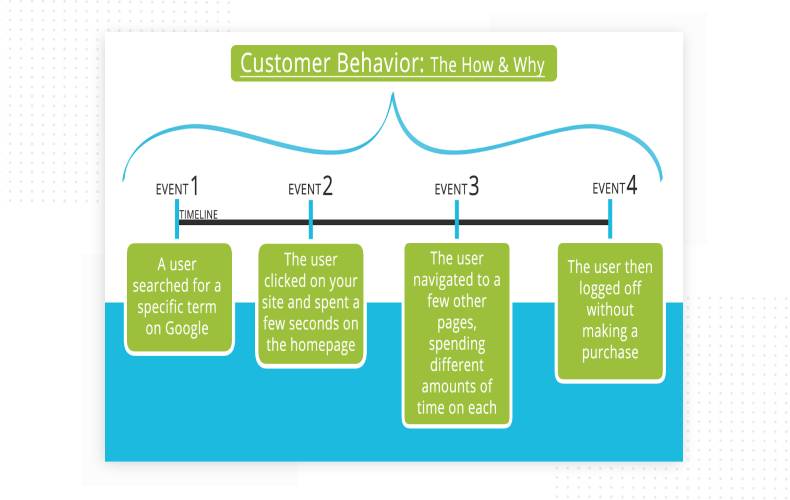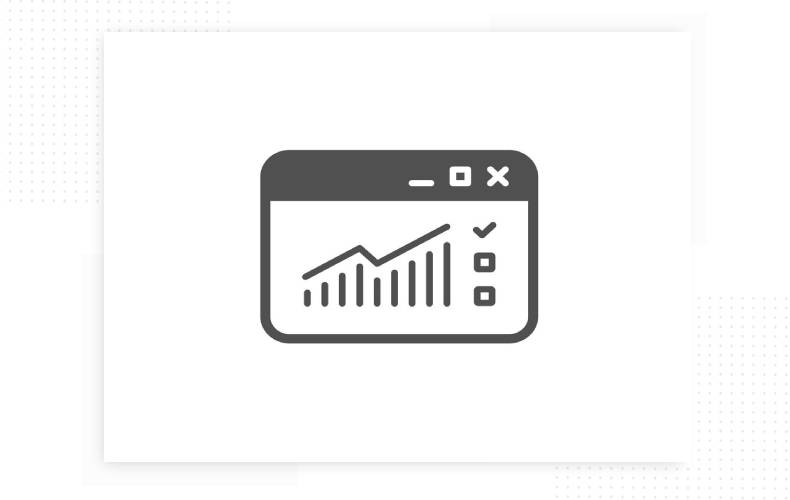
Behavioral ranking factors (a set of user characteristics) are one of the pillars on which SEO website promotion is based today. Let's take a closer look at what this tool is and how to get to the TOP with it.
Computers have not yet learned to think like ordinary people, so search engines take into account, along with other criteria, behavioral ranking factors. This is an analytics of the actions of ordinary visitors who “walk” on websites (login, time spent, page views, clicks, the moment they return to the resource, etc.). The fact is that ranking resources only by authority is too mathematical and an insufficiently objective approach. There are many “loopholes” in it, with the help of which SEOs sometimes unfairly promote sites to the TOP.
Search engines now approach the evaluation of web portals in a completely new way and put real people at the head of the preferences. But this does not mean that classic SEO tools (links, context) are no longer relevant. It's just that they are no longer dominant in website rankings.
It is believed that for the first time the behavioral factor began to be taken into account in Google back in 2003, when the Florida (now Panda) filter appeared. The search engine began to take user characteristics into account, which led to the sinking of many “dishonest” web resources.
A few years later, Microsoft (the creator of the Bing search engine) presented the Browserank technology (a PF accounting algorithm). It was supposed to become more loyal than Florida and Google's PageRank, since it would bring out portals with the highest user activity (clicks) to the TOP.
At the end of 2010, the influence of PF on the ranking was noticed in Yandex, and in 2011 a special filter appeared in the browser that automatically pushed websites out of the top positions if they had twisted behavioral factors.
Now, when ranking, as before, the optimization of content and links is taken into account, but user characteristics are the main criterion.
Search results for Yandex and Google are a storehouse of information about visitors and all their actions, but search engines cannot get such data so quickly from each of the web resources that appear in the search results.
How do search engines measure the behavior of Internet visitors on various sites? There are two main ways:
Yandex.Metrica counter. It is not only functional, but also completely free. Why? Because when the counter is installed on the Internet portal, Yandex receives the necessary PF data for ranking.
Yandex.Elements. They allow you to significantly expand the functionality of browsers (Mozilla, Opera, Chrome, etc.) and improve their usability. However, such software (including the Alexa Toolbar) can collect data about the actions of visitors on various resources where the toolbar is installed.
It turns out that there is no point in using behavioral website promotion, because the search engine will still find out the true indicators. You also need to take into account that the same PF coefficient for sites with different thematic focus may have different values: for one it is good, for another - so-so.
In the SEO world, there are still rumors circulating about which behavioral ranking factors search engines take into account. There are a lot of them, but the most obvious ones can be distinguished:
Bounces. For bounces, there must be two conditions: the user has spent less than fifteen seconds on the resource or has looked at only one page (the entry and exit points are the same).
Time spent on the site. This means the time that the visitor devoted to the portal until the moment they took a half-hour break in opening pages or turned off the computer at all.
Session depth. This indicator is calculated by the number of viewed pages per visit. The higher it is, the better. The depth of the session is largely determined by the topic of the portal: it will naturally be higher on entertainment sites than on informational or news sites.
Sources of traffic. When users visit your website via a direct link (from a bookmark in a browser, social media, or by entering a URL into the search bar), it is considered the most valuable source of traffic. Visiting without using search results means that the user knows your resource and systematically uses the information / goods / services provided on it.
CTR. Click-through rate means the ratio of the number of clicks from the issuing and the number of views of the information on the website. The higher its CTR, the better it is ranked by search engines.
Website behavior. The score of a visitor's manipulation on a website is determined by analyzing the movement of the mouse cursor and its actions. This technology is used to filter out PF cheating.

Also, search engines are sensitive to another interesting criterion - the return of an Internet user to the SERP after going to the portal. If the search engine sees frequent returns, as well as other “unattractive” actions on the part of visitors, it may lower the position of the resource in the search results. Nevertheless, search engines approach PF parameters very selectively. Don't get hung up on one custom characteristic.
To evaluate these ranking parameters on your own resource, use the special services. For example, Google's DoubleClick Ad Planner. Going to the "Traffic statistics" section, you can see the cherished user characteristics in the bottom two lines:

To obtain the necessary information, you can use any other service convenient for you. Most importantly, be sure to compare a website with a similar website to determine if your own PFs are in line with the standards set by your business.
Improving usability. You can increase PF indicators only if your resource is convenient to use. What influences this very “convenience”? Font size, availability of interesting content, simple and understandable data entry forms, button layout, site architecture, high-quality, well-thought-out design, etc. For many people, for example, the intrusive online consultant gets in the way, especially if they often have to minimize the pop-up window. As a result, the visitor quickly closes your site. Pay attention to how often this functionality is displayed on pages.
Attracting new visitors. In order for search engines to rank your site more highly in terms of visitor behavior, you need to study your target audience and create a “backbone” of potential customers. The simplest tools for this are social media traffic and newsletter lists. Also try to get a regular audience from alternative sources (not from search results).
Quality content. Errors in the text may seem at first glance to be a rather harmless thing. But if they are found in the content on all pages, then this can be one of the reasons for the drop in ranking. Publish only literate, useful and interesting materials on your website. Use services to check the uniqueness and spelling if necessary.
Interactivity. To increase the duration of the session (the time the user spent on your site), there is a simple way: insert video instructions, thematic videos under the publications. If the video is really interesting, it will probably keep the visitor's attention for a while longer.
High speed of loading pages. No matter how trite it may be, but the response of the website is one of the most important factors in good traffic to your resource. Modern technology allows most people to use high-speed Internet, but if a person waits for a long time for a site to load from search results or from the desired page, this can lead to a high bounce rate. Test your site, look at the response rates and, if possible, provide your visitors with high page loading speed.
There are certain tricks that SEOs use to cheat user behavior in the search results of Yandex and Google, which allows them to promote a website to the TOP. But as soon as a search engine calculates such a resource, it immediately pessimizes it (lowers its position in search results), and in case of serious violations, it can even ban it (the site will stop being indexed).
Botnet. It is a network of virus-infected computers all over the world that are controlled by hackers. The owners of the PC does not even suspect anything while the virus script enters the search results of the browser and, on behalf of the computer user, navigates to the necessary websites. The organization of the Botnet is a criminal offense, albeit difficult to prove.
Clickers. PF promotion can be done manually using inexpensive clickers from exchanges. How it happens: the optimizer gives the task in a search engine to type a query, and then go from the search results to a specific website. This might seem like a pretty good way to improve user performance. In fact, it is enough to go to Alexa on the page with the data of a particular site. In the “Clickstream” tab, you can check if any domains are personal cheat services.
The behavioral factor is something that must be taken into account if you want to consistently maintain a leading position in the TOP of the search results. User characteristics are very diverse, so for effective SEO promotion one cannot do without deep analytics of the resource and its target audience. You will probably have to fix the existing errors on the portal, optimize usability, work on content and create a circle of regular visitors.
There are safe and effective ways to improve user experience, which we have described above. But in pursuit of high PF rates, you should not resort to prohibited methods. Firstly, they give only a short-term result, and secondly, the search engine can ban your site for cheating, which will inevitably lead to a decrease in the number of sales and profits. In order for your business to flourish and bring real income, and not just beautiful conversion statistics, seek help from experienced SEO specialists. To find out the terms of website promotion, contact us directly.
Leaders in the IT market |
| 14+ years of experience and innovative solutions to help your business stand out and grow. |
Inspiring portfolio |
| 150+ successful projects: from sleek landing pages to complex corporate systems. |
Team of experts |
| 51+ professionals who bring your ideas to life with maximum efficiency. |

| NOTORIUM TRADEMARK AWARDS |
| Notorium Trophy 2017, Notorium Gold Medal 2018, Notorium Gold Medal 2019 |

| TRADE MARK OF THE YEAR |
| Gold Medal 2016, Gold Medal 2017, Gold Medal 2018, Gold Medal 2019 |

| THE BEST EMPLOYER OF THE YEAR |
| According to the annual Survey conducted by AXA Management Consulting - 2017, 2018, 2019 |